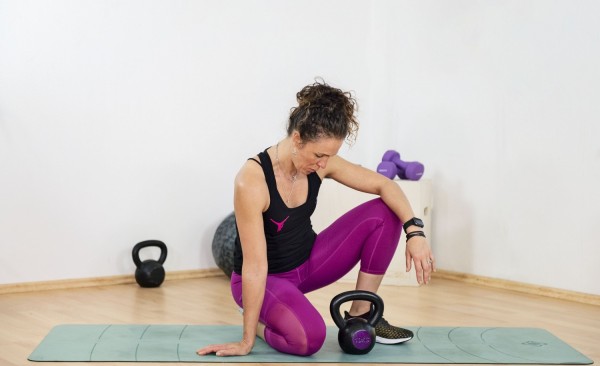Pandemic's Effect on Workouts and Exercise
With the emergence of COVID-19 and the pandemic's control over the world, physical activities outside are prohibited during the lockdown season. Thus, gyms closing, and yoga classes are being suspended because of the higher risk of spreading the virus. How can one continue their exercise routines without gyms and yoga studios?

ALSO READ: A Benefit of Exercise That You Probably Haven't Heard Much About
According to the Centers for Disease Control and Prevention (CDC), Americans need to have 150 minutes of exercise a week, divided into 30 minutes a day. However, because of the pandemic, some individuals' workout schedule got distorted, and it is sometimes not executed. In an interview with WebMD, the author of a survey of about 900 Americans across the United States conducted earlier in the year, and associate professor at exercise, science, and sports studies at College of Saint Benedict and Saint John's University Mary Stenson, Ph.D., said that COVID-19 restrictions imposed early in the pandemic created a unique and unparalleled environment, as well as limited access to resources, and in some cases increase the unstructured time of the people. She also added that they were curious about how these changes will affect the United States' physical activity patterns during the shutdowns.
Results of the survey
According to the release, it shows that in more than 85% of the women respondents, over 60% of them meet the World Health Organization threshold (150 minutes of exercise per week), on behalf of an 8% jump from pre-pandemic routines. The release further said that researchers were also able to find out that more than 11% jump in the number of actually beyond the threshold.
READ ALSO: 3 Ways to Burn More Calories and Achieve Perfect Abs
The release notes that the number of days spent per week on exercise heightened notably, from 3.75 days to 4.25 days. The researchers emphasized that the time spent on workouts stayed stable in an hour. The intensity of exercise decreased per day simultaneously with respondents accrediting access to gym equipment and classes. Dr. Stenson also said in the interview that the increase in activity is in line with their expectations. She also said that the findings replicate or reflect the loss of performance accountability that comes with the cancellation of group workouts and organized sport and trainer sessions.
Upon gathering the results, Dr. Stenson said that the release was surprising. An additional observation mentions that nearly three-quarters of the respondents claimed that they likely to stick with their pandemic exercise habits even after the pandemic. She added that nearly 94% of the ones who amplified their physical activities since March said that they planned to continue their new routines even after the incoming year. Dr. Stenson and her team are hopeful that they realized how much they can still be active even with limited resources.
In an interview with WebMD, University of California San Diego's School of Medicine Professor Dr. Beatrice Alexandra Golomb said that fitness is tied with better health outcomes and fewer COVID-19 high-risk factors, obesity, and diabetes, which means exercise amid COVID-19 is still highly important.
READ NEXT: Higher Depression and Anxiety Risk Linked To Low Fitness
Check out more news and information on Exercise Routines on MD News Daily.
Nov 18, 2020 07:00 PM EST





